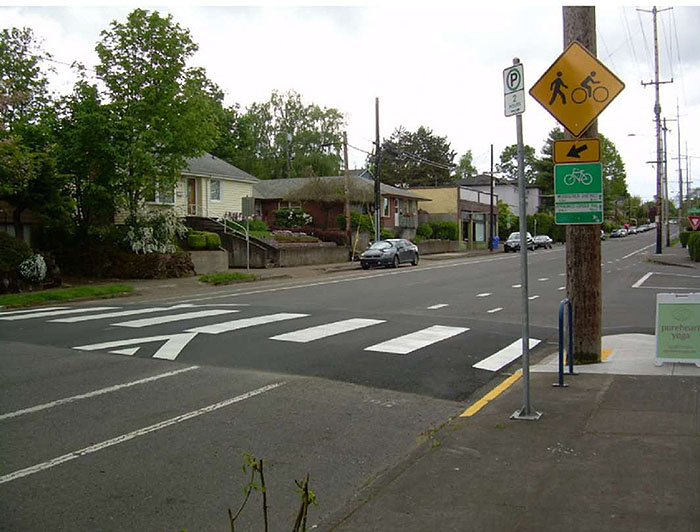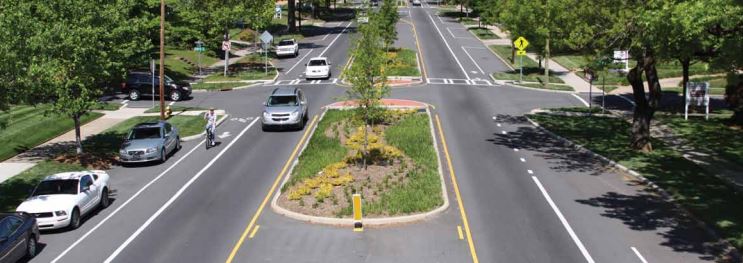The number of pedestrian fatalities in the United States has been rising steadily for the past decade, reaching new high of 6,590 in 2019, according to data from the Governor’s Highway Safety Association.
Many of these deaths occur at uncontrolled crossing locations including mid-block crosswalks and desire paths. These are among the most common locations for incidents involving pedestrians due to insufficient crossing opportunities and infrastructure, both of which present barriers to safe, convenient, and sustainable pedestrian networks.
Fortunately, there are a great number of ways municipalities can address these issues, including what the Federal Highway Administration (FHWA) has identified as the Spectacular Seven in their Safe Transportation for Every Pedestrian (STEP) program. The program is part of their larger Every Day Counts initiative, a state-based model that “identifies and deploys proven, yet underutilized innovations” for a wide variety of transportation applications.
STEP is part of the most recent round of innovations (2019-2020) and includes the following recommended countermeasures:
1. Rectangular rapid-flashing beacons (RRFBs)
RRFBs are pedestrian-activated flashing amber LED lights that signal to drivers that a pedestrian is about to enter a crosswalk. They are typically used at mid-block or uncontrolled crossing locations, and have been shown to increase driver yield behavior to as much as 82%, according to one trial in Florida.

2. Leading Pedestrian Intervals (LPIs)
Leading pedestrian intervals give pedestrians a head start so they can begin to cross the street before vehicles traveling in the same direction get a green light. Most LPIs give pedestrians an extra 3-7 seconds, allowing them to become more visible to vehicles that may be turning into their path.

3. Crosswalk visibility enhancements
Enhancements can include a variety of things, from overhead lighting to enhanced signage to curb extensions—anything that can help drivers better detect pedestrians, particularly at night. Improved nighttime lighting has proven to be particularly impactful, reducing pedestrian crashes by as much as 40% in some locations.

4. Raised crosswalks
Essentially a speed hump combined with a crosswalk, these features help reinforce slower speeds while encouraging drivers to yield to crossing pedestrians.

5. Refuge islands
Typically installed in the middle of a two-way street, refuge islands give pedestrians a safe place to stop and wait for drivers to yield. They are especially useful for wide road crossings (e.g. 4 or more lanes) and for pedestrians with limited mobility. RRFBs can also be used to enhance refuge islands for additional visibility and safety.

6. Pedestrian hybrid beacons (PHBs)
These lights fall somewhere between an RRFB and a full pedestrian signal that you’d find at an intersection. They are mounted on mast arms above a mid-block crosswalk and have red and yellow lights that signal to drivers when pedestrians are present.

7. Road diets
A road diet involves reconfiguring roads with multiple lanes (e.g. four) into roads with fewer (e.g. two or three, with bike lanes, refuge islands, or other facilities reclaiming some of the space previously used for vehicles. This can help slow vehicles down and reduce the number of lanes pedestrians must cross.

The STEP program’s Spectacular Seven are cost-effective countermeasures with known safety benefits that can be used to help reduce incidents and increase safety at a range of crossing locations. We’re excited about the potential for this new program, and we look forward to working with cities to help them develop safe, convenient, and sustainable multimodal networks.



